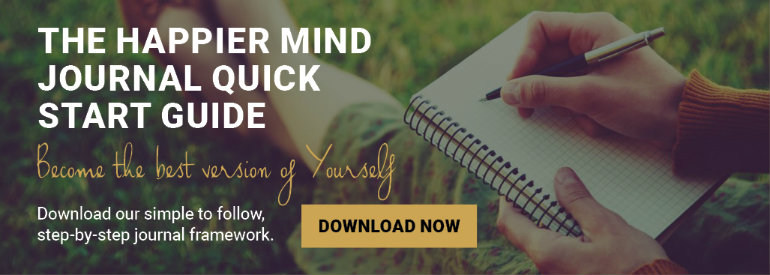 Reading Time: 6 minutes
Reading Time: 6 minutesIf you ask any person within a 100-mile radius, they can list off their weaknesses without a second thought. You probably can, too. And you can do it with conviction. You’re pretty sure you’re right.
But if you ask people to share their strengths, what kind of responses do you expect?
Silence, probably. Hesitation. Uncertainty. Self-consciousness.
And when people finally come up with one strength to every ten weaknesses they listed, they say it like it’s a question: “Um…I’m a good listener? Maybe?”
Why are we so confident about weaknesses and so uncertain when it comes to our strengths? It’s because we tend to focus on the negative — when it comes to ourselves and it when it comes to everybody else, too.
That means we’re more likely to focus on what we’re bad at than we are good at. It also means we’re more likely to talk about what other people are bad at than what they’re good at, too. So not only do you have your internal dialogue playing your weaknesses on repeat, but you highlight it in your actual conversations, too.
- During your last performance review, your manager might have said, ‘We’re not going to spend much time discussing these areas of performance because you’re great at them. Let’s dive into where you can do better.”
- You’ve probably accidentally overheard more negative conversations about yourself than positive ones — even if you’re a great person (you probably are). We love to discuss the weaknesses of others. It is rare indeed that colleagues gather in the break room and carry on about a colleague’s talent.
- Even spouses that you love so much often give you criticism over applause. Think about it, you did the dishes, washed the laundry, and made dinner. You did so many wonderful things for your household and yet your spouse criticized you for not putting away your shoes – right?
So, to help you learn how to focus more on the positive, here are the questions I’ll set out to answer today:
- What is a “strength” to begin with?
- How do you identify your strengths?
- How can you put those strengths to work in your life?
What Is a Strength?
Most people would say, “Something I’m good at,” but a strength is much more than that. According to Marcus Buckingham and Donald Clifton, authors of Now, Discover Your Strengths, a true strength meets three criteria:
- You are good or have the potential to be good at it.
- You are energized by doing it.
- It benefits something greater than yourself.
How Do You Identify Your Strengths?
You can take the CliftonStrengths assessment to identify your strengths, but there’s an almost-fatal flaw that you should consider before you invest in it: it identifies your strengths based on what you say about yourself.
Seems like a good way to do it. Surely, you’re the best judge of yourself, right?
While the CliftonStrengths assessment can be helpful, research shows that our views of ourselves don’t align well with our actual behaviors. That means you might actually be the least qualified person to provide information about your own strengths.

So then, we’re back to the original question: how do you identify your strengths?
One great exercise is called the “reflected best self exercise,” which is available at the Center for Positive Organizations. This exercise focuses on gathering information from honest, diverse sources who know you well.
Here are the steps:
- Ask ten people who know you well to write down three times they witnessed you at your best. These people should come from diverse backgrounds and should include mentors, managers, peers, family members, and those who have reported to you if possible.
- Identify patterns among the feedback you receive. Which themes do you see across multiple stories, and what strengths do those themes suggest?
- Create a self-portrait, outlining what you’re best at as perceived by those honest sources who know you and have seen you at your best.
- Put your strengths to work.
How Do You Put Your Strengths to Work?
First, you focus on them. This is by far the most challenging step for nearly everybody. Consider this case study, which describes our common response to weaknesses and the most common outcome:
A child playing middle school basketball scores 23 points in his first game of the season but also has 18 turnovers. His coach pulls him aside and tells him he needs to work on his ball handling and passing to prevent turnovers this season. He spends the majority of his free time and his practice time trying to improve his ball handling and passing skills. The next game, he scores 2 points and has 14 turnovers.
In this case, if the boy had focused on his strengths — or his strengths and weaknesses at the same time — his results may have stayed the same or improved. But because he focused on his weaknesses and neglected his forte, his performance declined.
Although most people are inclined to focus on and try to improve their weaknesses — and there’s something to that — focusing on your strengths should take priority ten times out of ten. Your strengths are the areas in which you have the most potential. Your efforts are going to produce the greatest outcome when you focus on your strengths.

Okay, so how do we focus on our strengths? There are lots of things you can do today to get started:
- Give yourself permission to have weaknesses and recognize that you don’t have to be good at everything. It takes all kinds and applying your strengths makes it perfectly acceptable to also have weaknesses.
- Consider reading Go Put Your Strengths to Work by Marcus Buckingham; this book offers actionable advice that you can use as a jumping off point.
- Journal words of affirmation that speak to your strengths, like “I am a leader,” “I am kind,” and, “I am potential.” Repeat those words to yourself when you get caught up in your weaknesses.
- Create a personal mission statement that includes applying your strengths and journal that statement every morning. If your strength is leadership, your personal mission statement might be, “To make a difference in the lives of those I lead.” Remind yourself of your mission statement when you lose focus.
- Create an action plan to put your strengths to work. Your action plan might include developing yourself by attending certain courses or obtaining a higher degree, changing careers or employers, giving of yourself to make a difference in the world, becoming a foster parent, etc.
Once you’ve created your mission statement and action plan, be mindful about how you spend your time. Before you invest time and effort into something, ask yourself, “Does this support my mission statement and action plan?” If it doesn’t, consider better uses of your resources (and yourself). Journal again at the end of each day to reflect on your success applying these practices and how that makes you feel.
And if you need help getting started, either download our free eBook or purchase a hardcover Happier Mind Journal with a 20% WLC discount. Use promotional code WLC20 at checkout.







